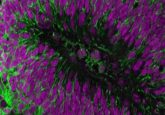There’s nothing crabby about RNA sequencing

Researchers have utilized the neural networks of crabs to validate the use of RNA sequencing for the identification of single neurons.
A team of researchers, led by David Schulz (University of Missouri, MO, USA), have demonstrated the ‘clawsome’ power of RNA sequencing for the anatomical and functional identification of single neurons.
The use of RNA sequencing is widespread for the identification of cells in the nervous system. However, previous classification studies have been impeded by other features of the cells. This work aimed to validate the accuracy of single-cell transcriptional profiling for the identification of individual neurons.
Speaking to BioTechniques, Schulz commented, “RNA sequencing is, and will be, used not only to understand how neurons work under typical conditions – and what makes them distinct from one another – but also to shed light on how development, growth, learning, injury, and disease change neurons over the lifetime of an individual.”
RNA sequencing and reverse transcriptase PCR were performed on two ganglia from the crab Cancer borealis, a model in which the identified neurons had previously been classified. The team essentially worked backward from previous results to validate the use of RNA sequencing.
Schulz explained, “with known cell identity to work from, we could blind ourselves to their identities for some of the analyses and see how well unbiased statistical methods perform in terms of recapitulating known biologically/physiologically known cell identity.”
- Advances in transcriptomics provide insights into brain disease and development
- Identifying T cells: the first step to developing successful immunotherapy for peanut allergies
- RNA Sequencing; as accurate as once believed?
Each neuron analyzed exhibited distinct gene expression patterns; however, expression profiles were not enough to accurately identify the neurons. Unbiased clustering analysis and supervised machine learning were also integrated into this approach.
The results demonstrated that transcriptional profiling for the assignment of neuronal identity is most accurate when combined with information regarding the physiology and morphology of the cells.
Identifying and understanding the operation of a single neuron has implications for developing targeted therapies for neurodegenerative diseases. RNA sequencing has the potential to inform our knowledge of how neurons are affected by injury and disease.
Understanding the intersect between variability, environment and genetics could advance insight into how individuals are differently affected by neurological diseases, contributing to the precision medicine revolution.
The team now hopes to utilize the knowledge gained from this study to determine how neurons are affected in spinal cord injuries.
“We are working to understand how injuries and diseases that cause changes to the normal activity of neural networks affect the neuronal gene expression profiles, and what this can tell us about how even indirect effects can contribute to pathology “downstream” of the actual insult,” concluded Schulz.





